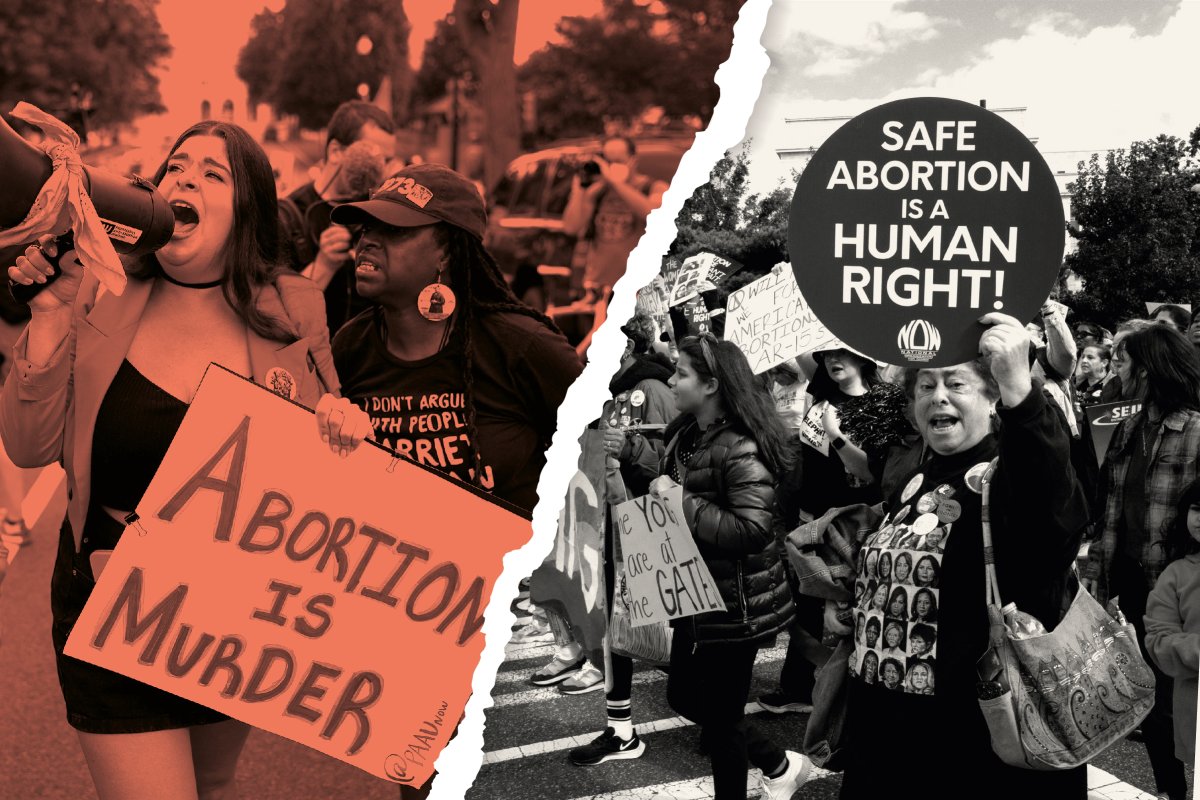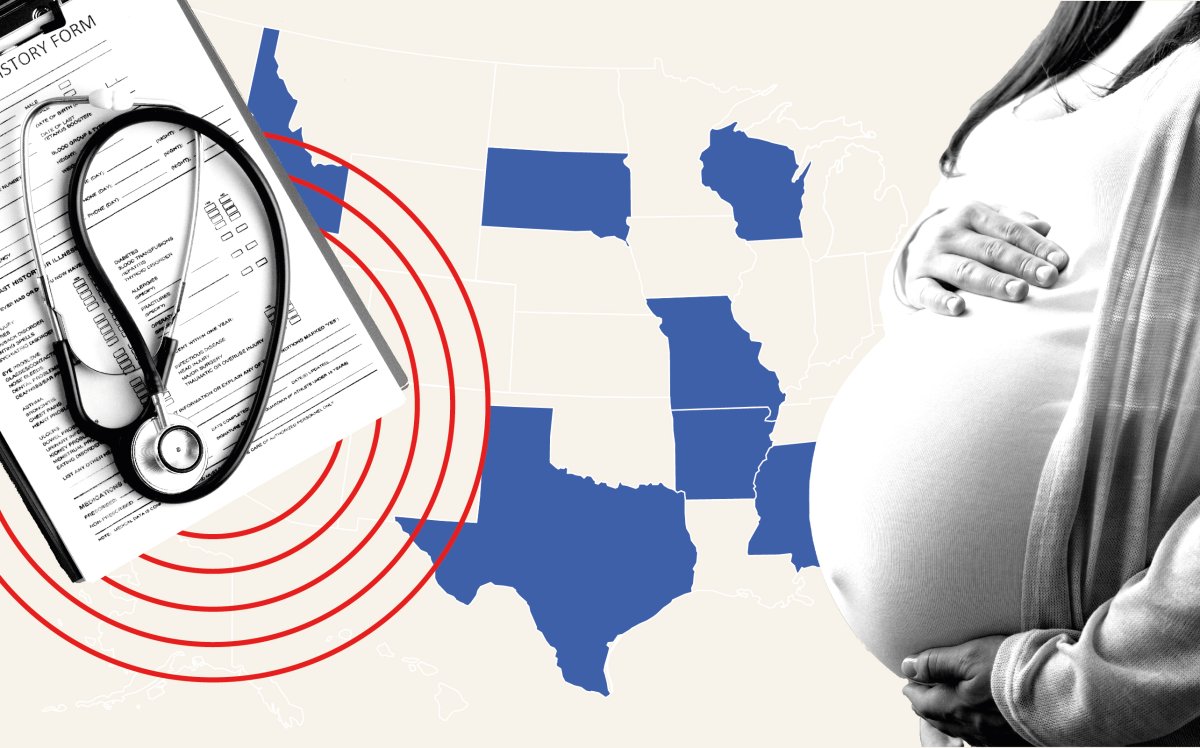- The U.S. had a 40 percent spike in its maternal mortality rate in 2021—the highest rate since 1965, according to a new report from the Centers for Disease Control and Prevention.
- Abortion-rights and anti-abortion groups have debated the cause, with the former arguing that anti-abortion legislation will cause the trend to accelerate and the latter arguing that access to health care is the real issue.
- Among the anti-abortion measures being introduced across the country, a Florida bill banning the procedure after six weeks of pregnancy has drawn national attention.
- The Florida Senate's minority leader said the bill could increase the maternal mortality rate because of its impact on mothers who deal with pregnancy complications and other health issues after birth.
A massive spike in U.S. maternal deaths has abortion-rights and anti-abortion groups debating the cause of the nation's most fatal odds for expectant mothers in more than half a century.
A new report from the U.S. Centers for Disease Control and Prevention (CDC) last week said that maternal mortality—deaths that take place during pregnancy or within 42 days after delivery—shot up by 40 percent in 2021. The figure reaffirms America's position as the most dangerous wealthy country to live in when pregnant or while giving birth.
The pregnancy statistics come as reproductive rights remain one of the most hotly contested issues in the country. The Supreme Court's decision last June to overturn the constitutional right to abortion by revoking Roe v. Wade sparked nationwide protests and gave Democrats an unexpected boost in November's midterm elections. In the wake of that ruling, some states enacted trigger laws banning abortions, and Republican legislators introduced a flurry of bills seeking to further restrict access to the procedure.
The figures showed a maternal mortality rate of 32.9 deaths for 100,000 live births—or about one death for 3,000 births. The World Health Organization put the rate in high income countries at 11 in 2017.
Upon the CDC report's release, abortion-rights advocates warned that the deadly trend would continue to accelerate if more anti-abortion legislation is passed into law. But anti-abortion activists countered by arguing that pregnancy-related deaths have less to do with the legality of abortion and more to do with access to health care.
"Abortion was entirely legal the entire year of 2021. It had been legal in the U.S. for nearly 50 years to that point, and it is that year that got us the highest maternal mortality rate since 1965," Scott Fischbach, executive director of the National Right to Life Committee, told Newsweek.
"The real concern with maternal mortality is making sure that women have access to good health care and that it is available to them," he said.

In a tweet, Lila Rose, president and founder of the anti-abortion nonprofit Live Action, agreed with Fischbach, calling the report's news "unacceptable" while urging the government to defund abortions and focus on birth and maternal health care instead.
Both abortion care and maternal care in the U.S. need to improve, Margarida Jorge, the executive director of political advocacy group Healthcare for America Now (HCAN), told Newsweek. "They're not exclusionary," she said.
While anti-abortion groups want to turn the conversation on maternal mortality away from the debate on abortion, abortion-rights organizations argue that the two are inextricably intertwined.
Jorge said abortion clinics are especially important for low-income women who want to carry their pregnancies to term.
"Planned Parenthood clinics have the ability to offer abortion care in addition to comprehensive sexual-reproductive health care that does include preconception counseling and care, as well as prenatal care," Dr. Bhavik Kumar, medical director for primary and transgender care at Planned Parenthood Gulf Coast, told Newsweek.
"If we're not able to offer that care directly at the health center, we can refer patients to a place where they're able to access that care," Kumar said.
Because abortion clinics can often act as information hubs for patients seeking to terminate a pregnancy as well as those seeking maternal care, Jorge said that groups and legislators who seek to outlaw these centers can create "long-term impacts on people's health," including for individuals who do want to have children.
Although anti-abortion groups, like Susan B. Anthony Pro-Life America, acknowledge that "the death of any woman during pregnancy is tragic," they also argue that the CDC report is "incomplete because of deficiencies in data collection."
"The poor quality of U.S. abortion data produces unstable estimates and makes it impossible to calculate the true maternal mortality rate in the United States, let alone make the unscientific claim that state pro-life laws are harmful to women," Tara Sander Lee, the vice president of life sciences at SBA Pro-Life America's research arm, the Charlotte Loizer Institute, told Newsweek.
Newsweek reached out by email to the CDC for comment.
Lee pointed to several studies from Scandinavian countries, like Finland, that show the risk of death from an abortion procedure to be four times greater than the risk of death during childbirth. And Fischbach cited research conducted in African countries, like Ethiopia and Malawi, that suggests that legalizing abortion does not bring down maternal mortality rates and, in some cases, even increases pregnancy-related deaths.
But the factor that these findings struggle to address is racial disparity in the U.S. Last week, the CDC reaffirmed that the maternal death rate among Black Americans remains 2.6 times the rate for white women.
"I would caution anyone looking at a study from Scandinavia that does not even remotely have a racial demographic similar to that of the U.S.," Breana Lipscomb, a senior adviser of maternal health and rights at the Center for Reproductive rights, told Newsweek.
Although Black people make up 13.6 percent of the U.S. population, they only account for roughly 1 percent of Finland's population.
As for studies conducted in the U.S., researchers reached the opposite conclusion from the Scandinavian studies: Childbirth is more dangerous than abortion. A report from the National Institutes of Health shows that less than 1 percent of women died from an abortion between 1998 and 2010 and that women are 14 times more likely to die from childbirth than the procedure.
Abortion-rights advocates say they are worried that these grim statistics will only worsen as more states introduce abortion restrictions.
Data from the Gender Equity Policy Institute shows that women living in states with abortion bans are nearly three times more likely to die from pregnancy, childbirth or soon after giving birth. And a study from the University of Colorado, Boulder, estimates that maternal mortality rises by 24 percent in the year after a ban is implemented.

Of the various GOP-led states that have begun rolling back abortion rights, abortion-rights groups are most worried about Texas and Florida. They are not only heavily populated states with restrictive abortion laws. They also haven't allowed Medicaid expansion and are home to large populations of low-income people and people of color.
Texas was one of the first states to act after the overturning of Roe: A trigger law, which has only narrow exceptions to save the life of a pregnant woman, went into effect there last August. And Florida has recently made headlines for a six-week abortion ban that was introduced in the Legislature. The measure, which tightens the 15-week ban approved last year, is expected to pass quickly, given that Republicans have a supermajority in both the House and Senate, preventing Democrats from blocking the bill. GOP Governor Ron DeSantis has said he would sign it into law.
The proposed legislation has drawn national attention. The White House warned that passing the bill would affect millions of women, including those in neighboring states with stricter abortion laws. Data from Florida's Agency for Healthcare Administration shows that 6,708 people came from outside the state for an abortion last year—a 37 percent increase from 2021.
The Democratic minority leader of the Florida Senate, Lauren Book, told Newsweek that several of her Republican colleagues have informed her that blocking abortion access for out-of-state women is part of the reason they've introduced the six-week ban.
"People could use Florida as a sanctuary place to receive reproductive care, and [GOP lawmakers] don't want people coming to our state seeking abortions," Book said.
She said she "absolutely" believes that the legislation would increase the maternal mortality rate because these bills could also hurt mothers who are dealing with hypertension, hemorrhages, miscarriages and fetal health issues.
A separate CDC report last September found that 84 percent of pregnancy-related deaths were deemed preventable and that 54 percent of those deaths occurred well after patients left the hospital, between a week and a year after delivery.
Kumar, who provides care in Texas, said he's already seen this happen as a result of the new criminal penalties enacted for abortions in Texas. With so much at risk, patients are "now in a place where they feel fearful and apprehensive of accessing health care or are unsure about their options."
Although both abortion-rights and anti-abortion groups have focused on the numbers from the CDC's new report, the health agency cited the pandemic as the main driving factor for the spike in maternal deaths. Not once is the word abortion mentioned in the report.
Nonetheless, the figures reflect a largely American problem: Maternal mortality is steadily on the rise, despite scientific advancements and no similar increases in other wealthy countries.
"This is something we've been saying for years, and it's only worsening," Kumar said. "We all have to recognize the public health crisis that is happening, and we need to move in the direction where we can give control back to people so they can decide what's best for them."
References
Hoyert DL. Maternal mortality rates in the United States, 2021. NCHS Health E-Stats. 2023. https://www.cdc.gov/nchs/data/hestat/maternal-mortality/2021/maternal-mortality-rates-2021.htm
Uncommon Knowledge
Newsweek is committed to challenging conventional wisdom and finding connections in the search for common ground.
Newsweek is committed to challenging conventional wisdom and finding connections in the search for common ground.
About the writer
Katherine Fung is a Newsweek reporter based in New York City. Her focus is reporting on U.S. and world politics. ... Read more
To read how Newsweek uses AI as a newsroom tool, Click here.








